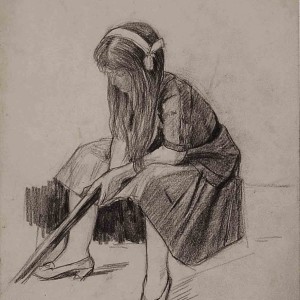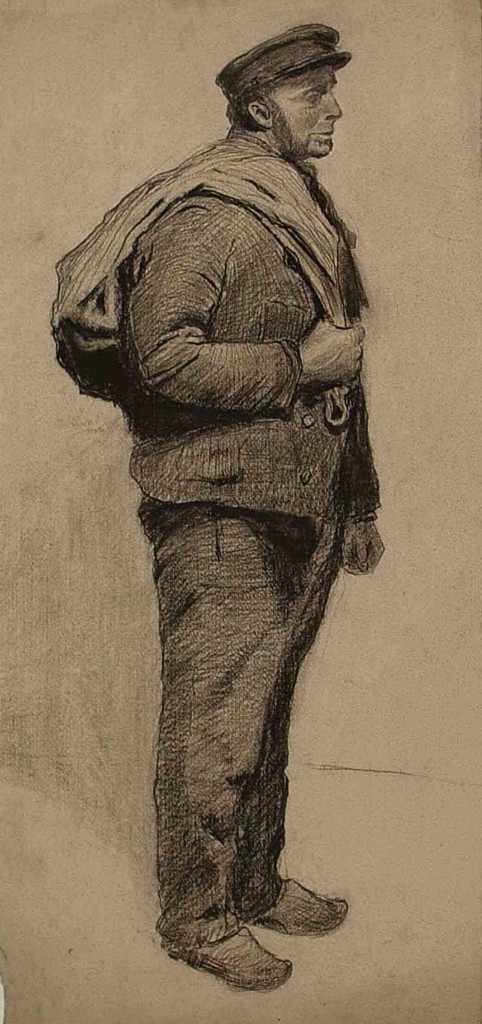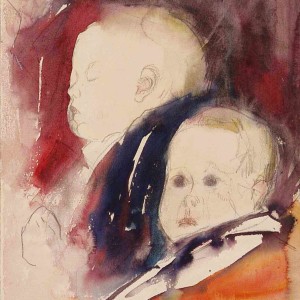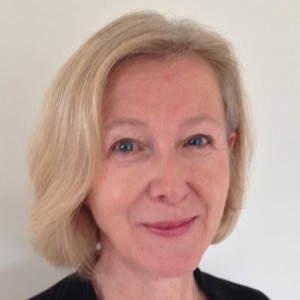Jan Sirks Biography: Early Years
Jan Sirks was born in Rotterdam on February 1885 as the third son of Laurens Sirks and Aletta Oostrum. His father was an administrator with the Dutch Iron Railway Company. The family took a keen interest in the arts and from a young age Jan attended concerts, the theatre and visited museums.
Education was considered of vital importance and Sirks was encouraged in his school work. His artistic capabilities were recognized at primary school but Sirks did not take this seriously since he abhorred art classes. He attended a secondary school (Rotterdam H.B.S –Alkemadeplein)with a focus on both science and languages and graduated in 1903.
Although the young Sirks loved art and was never far from his sketchbook, his mind was set on becoming an actor. This met with strong disapproval from his parents and an administrative role was arranged with the Dutch Iron Railway Company.
At the encouragement of his mother, he enrolled at the art academy in Rotterdam for night classes. His life as a student of art at one of the country’s leading institutions was short-lived; Sirks walked out half-way through his second class and insisted the approach was not right for him.
Sirks continues to draw, sketch and paint and finds it increasingly more difficult to continue with his work at the Dutch Iron Railway Company. Around 1910 his fascination with etching develops into a strong desire to create his own etchings and Sirks commits to learning everything he can. A monochrome still-life pastel of that year introduces the phase of black and white that was to propel Sirks into the arena of respected artists. He takes a studio around 1911 in the Wine Harbour.
When Sirks advertised for a model in 1912, the headstrong accomplished pianist Hillegonda Mol applied. She was the daughter of grain merchant Dirk Mol and needed money for a new piano. She possessed a commercial streak and immediately offered Sirks to sell his art for him. They struck a deal after some weeks but not until Sirks confessed his love for her and promised to buy her the coveted Bluthner upright grand piano in lieu of payment for her modelling.
Hillegonda was true to her word and within months Sirks resigned from his job. In 1915 Sirks was invited to exhibit solo at Caramelli and Tessaro in Utrecht. The first review described his work as young and vigorous and within weeks, Sirks received so many orders for his etchings that he had to engage a printer. Sirks connected with a multitude of artists during this time and like many others, developed an intrigue for spirituality and joined the Theosophical Society. He also joined the Dutch Land Brigade, a uniformed voluntary branch of the army and was enlisted with the ambulance service. He was deeply affected by his contact with the many displaced refugees.
Jan Sirks and Hillegonda were married in June 1916 and settled in Rotterdam. Over the next few years Sirks’s circle of friends and colleagues grew rapidly. In addition to rapidly developing his portfolio of etchings, he now painted abstract visions and exhibited with other avant-garde artists such as Jan Toorop, Hendrik Chabot, Piet Mondriaan and Herman Bieling. He takes on several committee roles such as with The Surf (De Branding) and The Signal (The Bergen School).
The last year of the war was tragic on a personal level because of the still-birth of his first son. This event and the war affected Sirks deeply. He emerged from this time with a vibrant palette and his subject matter becomes increasingly more action oriented.
The 1920s were a tremendously productive and rewarding phase in Sirks’s life. His three children Laura, Louise and Jan were born, his work was highly regarded and he had a string of admiring collectors in the Netherlands, Germany and London. In 1922 Sirks joined the Acacia Lodge in Rotterdam and became a Freemason. He travelled extensively during these years and worked in France, England and Germany on several occasions. He exhibited annually and received multiple commissions such as from the Holland America Line and the Dutch Olympic Committee.
In 1929 he became the first Chair of the newly established Rotterdam Artists’ Society. In the early 30s he assisted with the establishment of Oasis, a society that promoted closer ties between artists, musicians and writers and saw a long-time wish come to fruition.
Social justice became increasingly more important to Sirks and in 1932 he instigated the Crisis exhibition to raise funds for the many artists affected by the lengthy Depression. He began to experience health problems and was diagnosed with a debilitating heart condition that affected one of the valves. At this time Sirks also became increasingly more affected by the haste of the city and was highly alarmed by the developments in Germany and their effects on his many Jewish friends. He increasingly sought the calm and solitude of the country and in 1937 he farewelled his beloved Rotterdam and moves to Den Dolder with his family. He was invigorated by his new environment and worked until he very last days of his life. He died on 11 March 1938.



